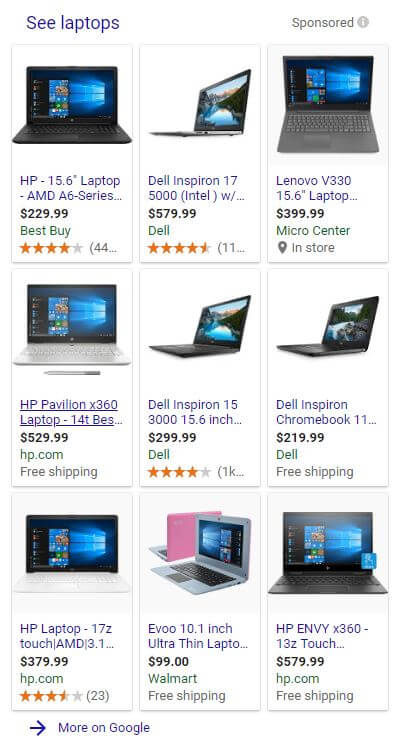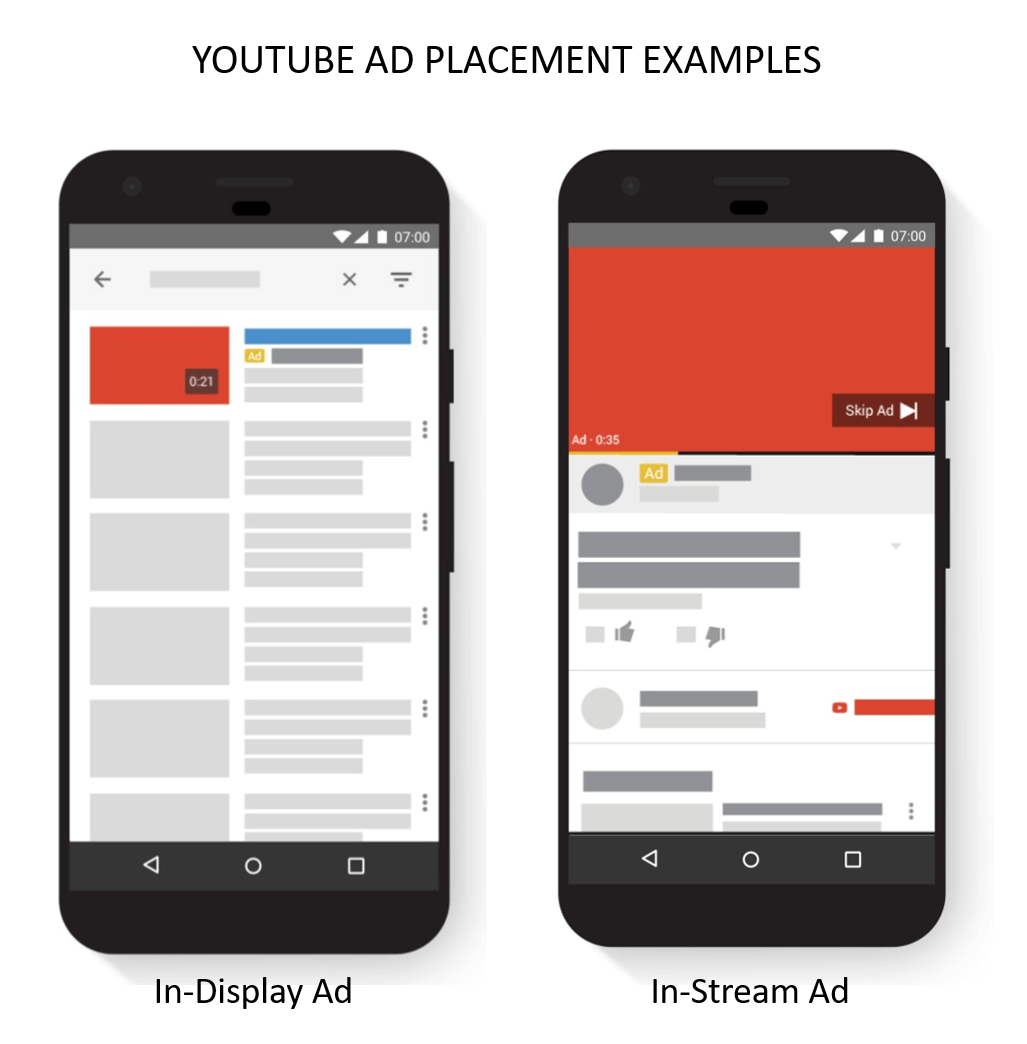In our last blog, we explored the basics of Search Listing Ads and when they’re most effective. In addition to search listing ads, there are a number of other advertising options available in Google Ads.
Previous Post: Exploring Google Ads Part 1: Search Listing Ads ➢
Display Ads
Display Ads are one of the most popular forms of PPC advertising options in Google Ads. They appear on the Google Display Network, which is a collection of websites – including specific Google-owned websites like Google Finance, Gmail, Blogger, and YouTube – that show Google ads.
The Google Display Network lets you place ads on news sites, blogs and other niche sites across the internet to reach more potential customers. They are very effective for attracting new customers with eye-catching ads. Great display ad campaigns start with great ads. You can create your own in minutes using the free display ad builder in Google Ads tools.
There is a variety of ad formats and sizes which I’ve detailed below:
- Text Ads – Similar in appearance to search listing ads, but appear within a website instead of the search engine.
- Image Ads – Frequently referred to as banner ads; they can be used in a variety of sizes.
- Rich Media Ads – Ads with animation or other types of motion (.GIFs)
- Video Ads
There are a variety of targeting options available for display ads that can be used in combinations or separately. The most effective ads and targeting are dependent on the goals of your display ad campaign. Some common targeting tactics include:
- Contextual targeting – Matches relevant site content
- Keywords (based on keywords used in a site’s content that is part of the Google display network)
- Topics
- Audiences – Reaches specific groups of people
- Audiences (affinity audiences & in-market audiences)
- Interest categories
- Re-marketing
- Demographics (age, gender, and marital status)
- Managed placement targeting – Selects specific websites and apps
- Placements (target and bid on specific websites)
We find that clients are most interested in image re-marketing display advertising. While this may be the most common type of display ad used, they all are viable options. The “best” type and targeting for display advertising is dependent on your messaging and goals.
Shopping Ads
 Shopping Ads or PLAs (Product Listing Ads), drive traffic and sales to your website or store by showing online shoppers rich images of and details about your product. They appear in their own box on Google search results above or to the right of organic search results. Google shows the customer a picture of your item, its price, and your store name. Customers who click on the ad are directed to your website.
Shopping Ads or PLAs (Product Listing Ads), drive traffic and sales to your website or store by showing online shoppers rich images of and details about your product. They appear in their own box on Google search results above or to the right of organic search results. Google shows the customer a picture of your item, its price, and your store name. Customers who click on the ad are directed to your website.
With Product Listing Ads, you’re charged only if someone clicks on your ad and lands on your website. In other words, you only pay when Google directs a customer to your store. Product Listing Ads are created by submitting product data feed in a Google Merchant Center account. Once the data feed is submitted and approved, the PLA campaign can be managed within your Google Ads account.
Shopping Ads are very effective for companies with e-commerce website who have a large product offering. If you sell under 500 products, you may have trouble getting visibility on Google Shopping. However, if you sell products in categories like automotive supplies, clothing, tools, or furniture and you’re not listing on Google Shopping, you’re likely missing out on significant revenue. Google Shopping Ads dominate for online merchants and tend to generate the most traffic and profit for e-commerce sites.
If you sell products in categories such as automotive supplies, clothing, tools, or furniture and you’re not utilizing Google Shopping ads, you’re likely missing out on significant revenue.
YouTube Advertising
With YouTube ad placements your ads either appear before videos play, beside videos playing, or in search results. The two types of ad placements offered on YouTube are:
- In-stream – TrueView in-stream ads run on videos on YouTube watch pages or within Google Display Network videos, games, and apps. After five seconds, the viewer has an option to skip the ad.
- In-display – TrueView in-display video ads appear only on YouTube Watch pages and on the Watch pages of video publishers on the Google Display Network. The appearance of the ad will vary, depending on which ad sizes and ad formats that content publishers support. For example, YouTube is a key content publisher within the network, and these ads will function and appear in the same way across the YouTube site.
[/vc_column_text][vc_column_text]YouTube Ads Formats:
- Display – Appears to the right of the feature video and above the video suggestions list. For larger players, this ad may appear below the player. (300×250 and 300×60 Desktop Only)
- Overlay – Semi-transparent overlay ads that appear on the lower 20% portion of your video. 480×70 (Flash) or text (Desktop Only)
- Skippable Video – Skippable video ads allow viewers to skip ads after 5 seconds, if they choose. Inserted before, during, or after the main video.
- Non-Skippable Video – Non-skippable video ads must be watched before your video can be viewed. Long non-skippable video ads may be up to 30 seconds long. These ads can appear before, during, or after the main video.
YouTube Ads allow you to get your message in front of individuals searching for, or viewing, specific YouTube videos. They are a good option for most companies because the CPC (cost-per-click) is lower than search and the ads are very effective when used correctly.
Related Post: PPC vs. SEO: Which One Should I Focus On? ➢
At the end of the day, the right targeting, ad formats, and network are dependent on your ad’s messaging and your campaign’s objectives.
–> For instant access to Parqa’s blogs, follow us on Twitter at @ParqaMarketing and on LinkedIn!




